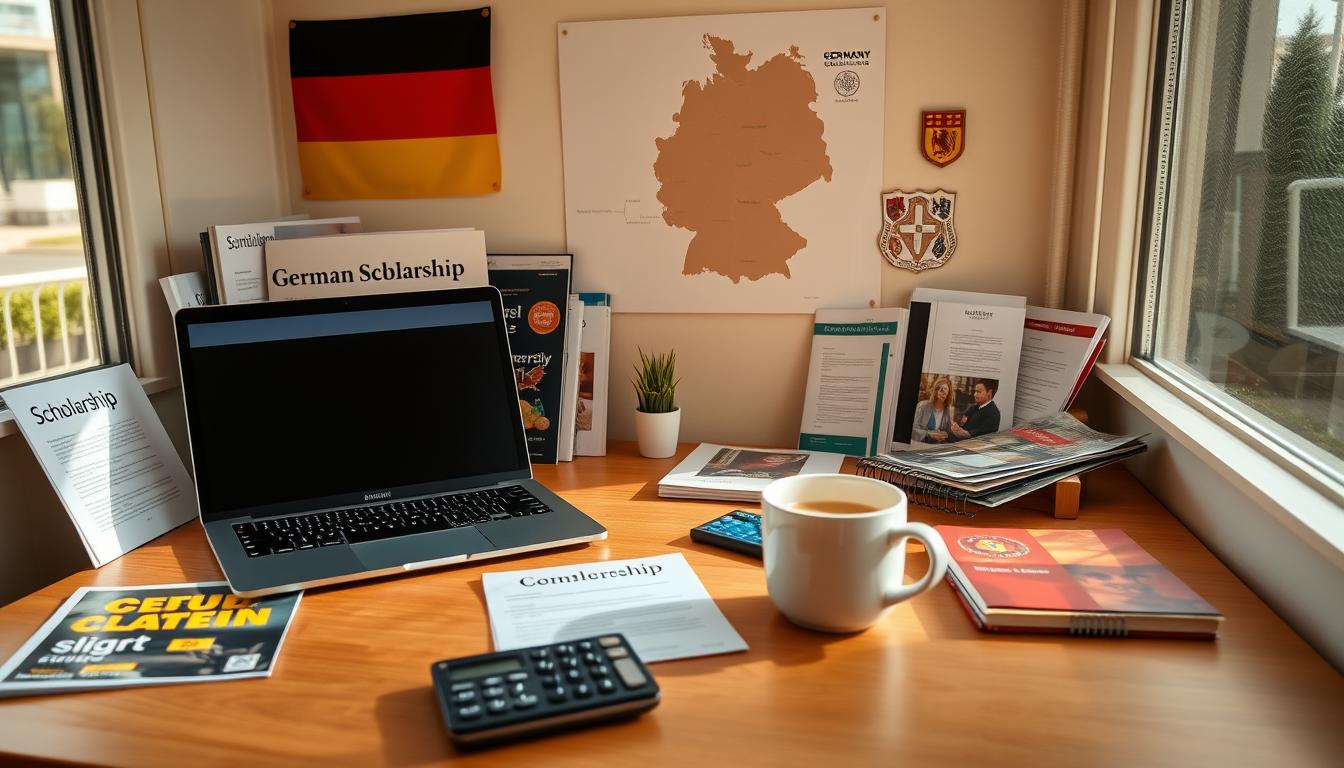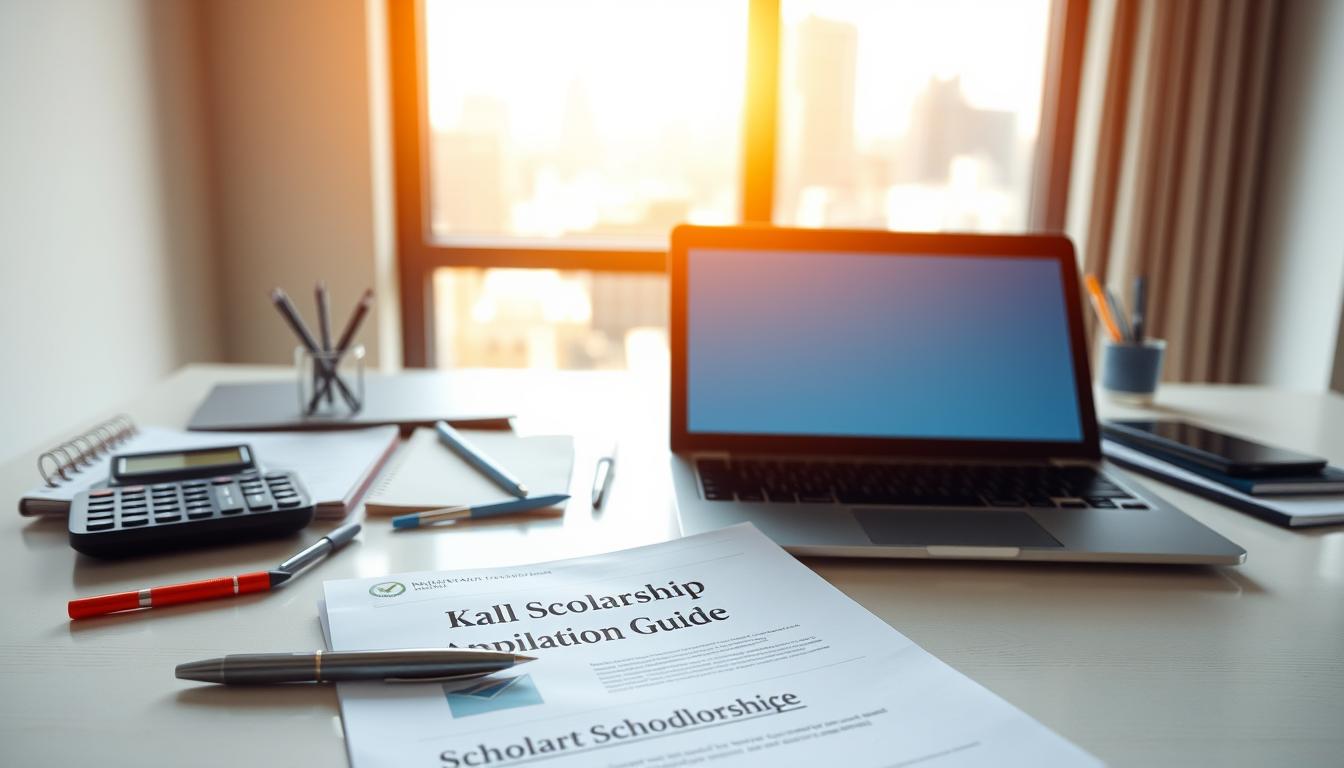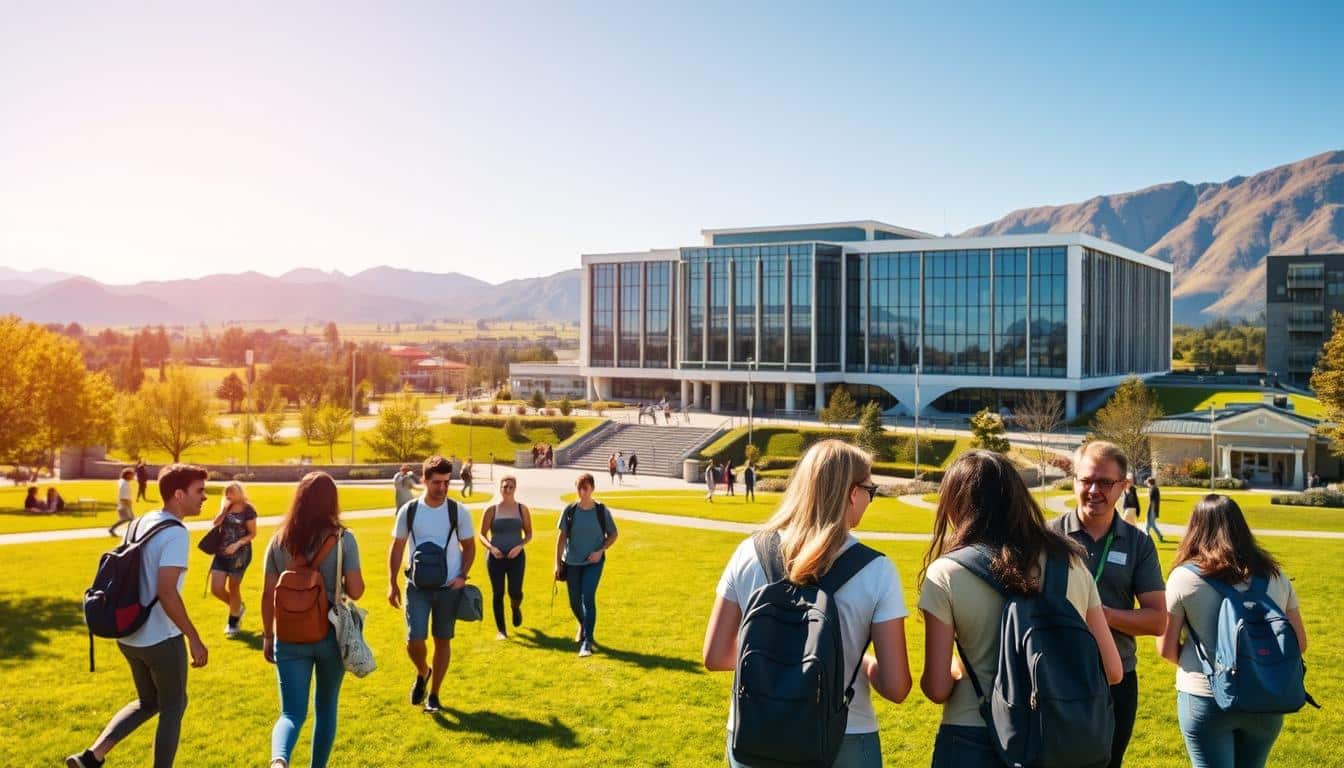Pursuing higher education overseas can be life-changing, but funding is often a major concern.
Anúncios
For South African students, financial aid options like grants and bursaries provide valuable support. This guide simplifies the process of applying for international academic funding in 2025-2026.
Government programs and university-specific awards offer diverse opportunities. Understanding eligibility criteria early improves approval chances. Proper timeline management ensures no deadlines are missed during the application process.
Competition for these programs can be intense. Strategic preparation makes applications stand out. From document checklists to interview techniques, every detail matters when seeking financial assistance for global education.
For more information, explore the official scholarship website mentioned in this article:
You will be redirected to another website
Why Choose Australian Scholarships for International Students?
Global learners seeking top-tier education often find Australia an ideal destination. With over 1,000 funding options for 2025–2026, the country combines academic excellence with robust financial support. The average stipend of AUD 20,000 eases the burden for ambitious scholars.
Benefits of Studying in Australia
Australia ranks as the third most popular study-abroad hub, thanks to its 43 top-ranked institutions. 35% of enrollees are international students, creating a vibrant, multicultural campus life. Graduates gain access to post-study work visas valid for up to four years.
Unique research facilities in fields like marine biology and renewable energy set the country apart. Cities like Sydney and Melbourne balance urban living with manageable costs, especially when paired with stipends.
Financial Support and Coverage
Many scholarships offered include full tuition, health insurance, and travel allowances. Compared to other destinations, Australia’s funding packages often provide better living-cost coverage. This makes it a practical choice for students from South Africa and beyond.
Here’s a quick comparison of monthly expenses vs. typical stipends:
- Accommodation: AUD 800–1,200 (often covered 50–70% by awards)
- Food/Transport: AUD 500–700 (usually included in living allowances)
Types of Australian Scholarships Available
Financial aid options for global students vary widely, with distinct categories offering unique benefits. Each type targets different academic levels, fields, and nationalities. Identifying the right fit maximizes approval chances and funding value.
Government-Funded Programs
The australian government sponsors large-scale initiatives like the Australia Awards and Endeavour Leadership Program. These support undergraduates to PhD candidates across 55 countries. Below is a key comparison:
| Program | Scope | Max Value | Focus |
|---|---|---|---|
| Australia Awards | 1,000+ awards/year | Full tuition + living costs | Developing nations |
| Endeavour Leadership | Limited slots | AUD 272,500 (PhD) | Global research |
University-Specific Opportunities
Many institutions offer university scholarships independently. For example:
- Melbourne Research Scholarships: 600 awards with AUD 31,200 annual stipends.
- University of Sydney: 40 merit-based grants for international enrollees.
Research and Merit-Based Awards
Specialized funding exists for research excellence, particularly in STEM fields. The CSIRO Data61 Scholarships support tech innovators, while the Charlie Perkins Trust aids Indigenous scholars. Industry partners like BHP also fund targeted phd projects.
Top Australian Scholarships for 2025-2026
Several prestigious funding programs help global scholars achieve academic dreams. The upcoming cycle features remarkable opportunities across disciplines and institution types. Early preparation significantly boosts success rates in these competitive processes.
Australia Awards Scholarships
This government initiative provides complete tuition coverage plus AUD 3,000 for initial expenses. Applicants from South Africa benefit from dedicated quotas within the 1,000+ annual awards. The April 30 deadline requires careful documentation preparation.
Fields like agriculture and public health receive priority consideration. “Recipients gain access to exclusive alumni networks,” notes a program coordinator. The package includes return airfare and comprehensive health coverage.
University of Sydney International Scholarships
Postgraduate candidates can secure $40,000 yearly through Sydney Scholars Awards. Engineering and technology fields offer enhanced funding options. Two application rounds occur on September 12 and December 19.
The institution’s merit-based selection weighs both academic records and research potential. Successful applicants often demonstrate clear career impact plans.
Melbourne Research Scholarships
With only 12% acceptance rates, these competitive awards provide AUD 31,200 annual stipends. Biomedical sciences dominate the funded projects list. The university evaluates candidates based on:
- Publication records
- Research methodology rigor
- Faculty endorsement strength
Rotary Peace Fellowships
This unique program combines academic training with hands-on experience. Participants complete field studies at Queensland facilities among seven global centers. The structure includes:
| Component | Duration | Location |
|---|---|---|
| Core coursework | 3 months | Brisbane Campus |
| Professional practicum | 3 months | Assigned NGO/IGO |
| Thesis development | 6 months | Home country |
Masters degree seekers in conflict resolution find this particularly valuable. Full funding covers all program-related expenses.
Eligibility Criteria for Australian Scholarships
Meeting eligibility standards is the first critical step toward securing international education funding. Programs have distinct requirements that filter applicants effectively. Careful review prevents wasted effort on mismatched opportunities.
Academic Requirements
Most programs demand minimum GPAs equivalent to 3.0/4.0 for undergraduates. Postgraduate applicants typically need 5.5/7.0 scales. South African students should convert National Senior Certificate (NSC) scores using this guide:
- NSC 7 = 4.0 GPA (90-100%)
- NSC 6 = 3.5 GPA (80-89%)
- NSC 5 = 3.0 GPA (70-79%)
Research programs prioritize phd candidates with published work. Age limits often apply—25 years for bachelor’s, 45 for doctoral studies.
Language Proficiency
English tests are mandatory for non-native speakers. Common thresholds include:
- IELTS: 6.5 overall (no band below 6.0)
- TOEFL iBT: 79-93 points
- PTE Academic: 58-64 points
Some institutions accept Duolingo scores as alternatives. Test validity periods usually span two years.
Country-Specific Eligibility
South African students benefit from special considerations in many programs. The Australia Awards prioritize STEM applicants from rural regions. Required documents often need:
- Notarized NSC certificates
- SAQA evaluation reports
- Proof of disadvantaged background (if applicable)
These country-specific eligibility provisions help level the playing field. Students should check each program’s regional quotas.
Understanding these criteria simplifies navigation of australia international education systems. Early preparation ensures no surprises during application processes.
Required Documents for Scholarship Applications
Preparing a strong application starts with gathering the right documents. Missing or incomplete materials are common reasons for rejection. Organizing files early ensures a smooth submission process.
Academic Transcripts and Certificates
South African students must authenticate transcripts through SAQA. The process takes 4–6 weeks and requires:
- Notarized copies of NSC certificates
- Completed SAQA application forms
- Proof of payment for evaluation fees
Non-English documents need certified translations. Creative arts applicants should include portfolios showcasing their best work.
Letters of Recommendation
Most programs require two academic referees and one professional contact. Recommenders should highlight:
- Leadership potential
- Research capabilities
- Unique contributions to their field
Referees must submit letters directly to avoid tampering concerns. Provide them with deadline reminders.
Statement of Purpose (SOP)
A well-structured SOP follows this framework:
- 30% academic background
- 40% research proposal
- 30% career goals and alignment with the program
Keep it concise—500–800 words for most applications. Avoid generic statements; tailor content to each opportunity.
Step-by-Step Application Process
Breaking down the application into manageable steps increases success rates. From initial research to final submission, each phase requires precision. Avoid last-minute rushes by following a structured timeline.
Researching Suitable Scholarships
Start with centralized portals like Study Australia Scholarship Search. Filter options by field, award type, and eligibility. Compare scholarships international programs side-by-side for the best fit.
Key factors to evaluate:
- Funding coverage (tuition vs. living costs)
- Institution reputation in your discipline
- Alumni outcomes and network strength
Preparing Your Application Package
Gather critical documents early, including certified transcripts and English translations. Use this checklist:
- Academic records (SAQA-evaluated for South Africans)
- Two recommendation letters (academic/professional)
- CV highlighting leadership and research
Some institution portals, like Sydney Student, allow pre-submission reviews. Double-check formatting requirements.
Submitting Applications Before Deadlines
Track deadlines using a shared calendar. Note differences:
| Program | Deadline Type | Example |
|---|---|---|
| Australia Awards | Fixed (April 30) | No extensions |
| Melbourne Research | Rolling | Quarterly reviews |
For courier submissions (e.g., DHL), request tracking. Confirm receipt via email within 5 business days.
Key Deadlines for Australian Scholarships
Strategic deadline tracking separates successful applicants from those who miss critical submission dates. Institutions enforce strict cutoffs, with some programs accepting materials months before the academic year begins. South African students should note timezone differences when submitting electronically.
Upcoming Deadlines for 2025 Intakes
Major universities follow semester-based cycles. The University of Adelaide has two intakes: February 28 for Semester 1 and May 31 for mid-year entries. Griffith University operates on quarterly deadlines, with April 12 and August 16 as key dates.
Unique programs like Rotary Peace Fellowships require earlier preparation. Their May 15, 2024 cutoff for the 2025 intake allows for extensive vetting. Research candidates often benefit from rolling admissions, but early submission maximizes funding chances.
| Institution | Semester 1 | Semester 2 |
|---|---|---|
| University of Adelaide | Feb 28, 2025 | May 31, 2025 |
| Griffith University | April 12, 2025 | Aug 16, 2025 |
Late Application Considerations
Some universities accept delayed submissions with penalty fees, typically 10-15% of the application cost. Pathway programs may extend deadlines for conditional offers, but core funding opportunities rarely allow exceptions.
Deferral policies vary by institution. Most permit postponement up to 12 months with valid reasons like medical emergencies. “Always confirm deferral terms before accepting awards,” advises a Melbourne University admissions officer.
Tips for a Winning Scholarship Application
Crafting a standout application requires strategic focus on key elements that selection committees value. With 78% of successful applicants demonstrating verified community impact, highlighting unique contributions becomes essential. This section reveals proven methods to strengthen submissions for 2025-2026 cycles.
Highlighting Leadership and Achievements
Quantifiable accomplishments make the strongest impression. Instead of vague statements, show leadership through specific metrics:
- Managed 15 volunteers for a literacy program serving 200+ children
- Secured $5,000 in grants for campus sustainability initiatives
- Founded a debate society that grew to 60 members in one year
University Melbourne’s scoring rubric allocates 30% weight to proposal quality. Align achievements with Australia’s Global Alumni Strategy by emphasizing skills transferable to home countries.
Tailoring Your SOP to the Scholarship
Generic statements cause 63% of rejections. Effective Statements of Purpose (SOP) follow this structure:
- Academic journey and research interests (30%)
- Specific program benefits and faculty alignment (40%)
- Post-study plans benefiting home communities (30%)
“We seek candidates who articulate clear pathways from education to real-world impact,” notes a selection panel member. Reference specific courses or professors to demonstrate program knowledge.
Avoiding Common Mistakes
Simple oversights often derail strong candidates. Implement this proofreading checklist:
- Grammar/style verification across five key areas
- Consistent formatting per program guidelines
- Accurate word counts within specified limits
Prepare for interviews through mock sessions with alumni. Post-submission networking with department heads keeps applications top-of-mind during reviews.
Understanding Scholarship Funding and Stipends
Financial support packages vary significantly in coverage and value. Students should carefully evaluate what each program offers before committing. This ensures they can manage expenses throughout their studies.
Fully Funded vs. Partially Funded Options
Fully funded programs cover tuition, housing, and living costs. The Melbourne Research award provides AUD 31,200 annually plus health coverage. Partial awards might only fund tuition, leaving students to cover other expenses.
Deakin University offers a middle ground with AUD 28,600 stipend and relocation support. Always check what’s included before applying to avoid financial surprises later.
Living Allowances and Additional Benefits
The Rotary Peace Fellowship demonstrates comprehensive support with $1,000 monthly housing allowances. Sydney’s costs run higher than Adelaide’s:
- Shared accommodation: AUD 950 vs. AUD 700 monthly
- Public transport: AUD 150 vs. AUD 100 monthly passes
Tax rules differ for international students. Some awards count as taxable income, while others remain exempt. Consult an accountant familiar with both South African and Australian tax laws.
Many programs offer benefits for dependents. Spouses may receive AUD 7,000 annually, with children getting AUD 3,000 each. Research grants become available after enrollment for exceptional candidates.
Universities maintain emergency funds for sudden financial crises. These typically require documentation and faculty approval. Understanding these safety nets helps students plan with confidence.
Visa and Post-Acceptance Steps
Securing admission is just the beginning—navigating visa and relocation steps ensures a smooth transition. South African students should start these preparations immediately after receiving award letters. Timely action prevents last-minute hurdles before departure.
Student Visa Requirements
The Subclass 500 visa has a 94% approval rate for funded students. Essential documents include:
- Confirmation of Enrollment (CoE) from the institution
- Genuine Temporary Entrant (GTE) statement
- Proof of financial capacity (even with stipends)
Processing takes 8-12 weeks for South African applicants. The Australian High Commission offers pre-departure briefings covering visa conditions and arrival protocols.
Health Insurance and Accommodation
Overseas Student Health Cover (OSHC) is mandatory. Annual premiums range AUD 600-1,200 depending on coverage:
| Provider | Basic Plan | Comprehensive |
|---|---|---|
| Allianz | AUD 650 | AUD 1,100 |
| Bupa | AUD 600 | AUD 1,200 |
Many universities guarantee accommodation for award recipients. On-campus housing averages AUD 250 weekly, while homestays cost 20% less. Shared apartments provide budget-friendly alternatives at AUD 180-220 per week.
Early reservations are crucial—high-demand cities like Sydney fill housing slots 4-6 months before semesters begin. Award packages often include temporary lodging assistance during the transition period.
Frequently Asked Questions (FAQs)
Understanding application rules and deadlines can make or break funding opportunities. Many students from South Africa share similar concerns when applying for international programs. These answers address the most common queries.
Can I Apply for Multiple Scholarships?
Submitting several applications increases success chances. Data shows 63% of awarded students apply to 3-5 programs. However, coordination is essential to avoid conflicts.
Effective strategies include:
- Tracking deadlines in a shared calendar
- Customizing materials for each opportunity
- Disclosing other applications when required
Some restrictions apply to funding combinations. Most programs in Australia prohibit “stacking” full awards. Partial scholarships often allow combination up to set limits.
| Strategy | Pros | Cons |
|---|---|---|
| 3-5 applications | Higher success chance | More preparation time |
| Single prestigious award | Focus on quality | Higher risk if rejected |
What If I Miss the Deadline?
Late submissions face automatic rejection in most cases. However, some options remain:
- Waitlist positions convert 15% of the time
- Pathway programs offer alternative entry points
- Special consideration for documented emergencies
Deferral requests must show valid reasons like medical issues. Reapplying often proves better than rushed late submissions. The table below compares options:
| Option | Success Rate | Next Steps |
|---|---|---|
| Waitlist | 15% | Submit additional materials |
| Deferral | 40% approved | Medical documentation |
| Reapplication | Varies | Improve weak areas |
For study programs with rolling admissions, late applicants may secure remaining spots. Always contact the admissions office directly for guidance.
Conclusion
For ambitious students, early preparation is the key to unlocking global opportunities. Meeting deadlines, gathering documents like SAQA-evaluated transcripts, and tailoring applications make all the difference.
South African applicants should:
- Verify eligibility against country-specific criteria
- Secure referees and draft impactful SOPs early
- Track deadlines across multiple programs
Alumni data shows an 89% employment rate within six months of graduation. The Global Alumni Network offers ongoing mentorship and career resources.
Start now—competitive programs reward those who plan ahead. With focus and the right strategy, academic dreams can become reality.
FAQ
Can I apply for multiple scholarships in Australia?
Yes, students can apply for several funding opportunities simultaneously. However, some programs may have restrictions, so always check individual guidelines.
What happens if I miss the application deadline?
Late submissions are rarely accepted. Some institutions may allow exceptions under special circumstances, but it’s best to apply well before the cutoff date.
Are there scholarships available for undergraduate studies?
Many universities and organizations offer financial aid for bachelor’s degrees. Options include merit-based awards and institution-specific grants.
Do I need to take an English proficiency test?
Most programs require IELTS or TOEFL scores unless you’ve completed prior education in English. Minimum score requirements vary by institution.
How competitive are government-funded awards?
Programs like the Australia Awards receive thousands of applicants annually. Strong academic records and leadership experience improve chances of selection.
Can part-time students receive financial assistance?
Some funding options support part-time enrollment, but full-time study often maximizes eligibility. Verify conditions with each scholarship provider.
What costs do these awards typically cover?
Comprehensive packages may include tuition, travel, health insurance, and living stipends. Partial awards might fund specific expenses like research materials.
When should I start preparing my application?
Begin gathering documents 6-12 months before deadlines. This allows time for test preparation, recommendation letters, and essay revisions.






